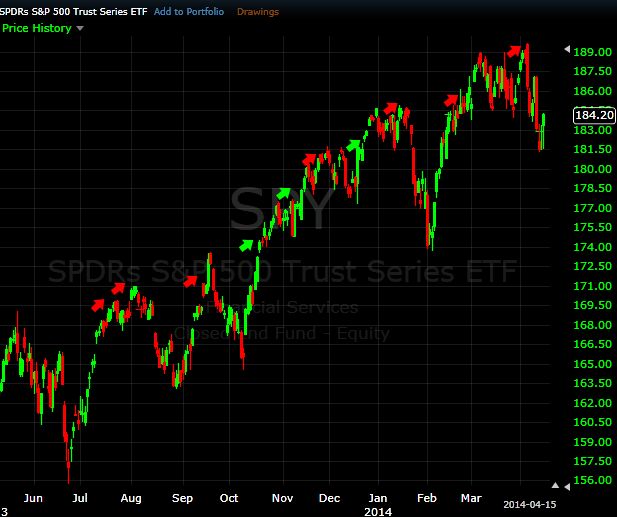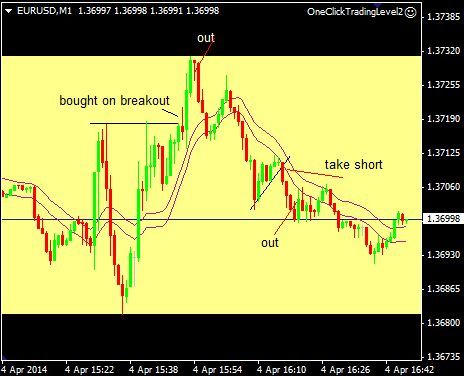Are You Addicted to New Highs and New Lows?
Maybe because it is discussed in most basic trading books, and is a often referred to as a “break to new highs (or lows),” that trading a new high or new low seems so appealing. Most traders are taught by basic strategies or free guides to trade an uptrend by buying (shorting) when the price surpasses an old high (low)…as this “confirms” the trend. While this can be profitable some of the time, quite often it won’t be. If you go through your charts you will frequently the price just eclipse an old high or low and then quickly retreat back the other way. This essentially makes you feel like you took a trade at the worst possible time.
The New High and New Low Fallacy
As indicated before, I am not saying buying on new highs or selling on new lows never works. Of course it can be profitable some of the time. And in the next section we will like at how to increase your odds if you are going to buy new highs or sell new lows.
On figure 1 I have marked moves new to highs, during a strong uptrend in the S&P 500 ETF. Red arrows mark new highs that quickly moved back below the entry point within a few bars, making the profit potential extremely ambiguous. Green arrows mark rallies to new highs where the price stayed above the former for at least a few days, making it likely at least a small profit was made.
Figure 1. S&P 500 ETF Daily Chart

10 trades are marked, only three were likely profitable, and 7 could have very easily been unprofitable. Not a very high probability strategy if you ask me.
I used the S&P 500 because it representative what of what you see in most stocks, and most assets overall for that matter. While this is a daily chart, these types of results are typical when trading any time frame.
So why is this? Why doesn’t buying on new highs (shorting on new lows) work as often as it should?
If you have read my day trading articles or any of my strategy article you’ll know that I am typically looking to buy during a pullback on an uptrend (see: Trade Middle Waves for a High Probability of Success to see the type of entry I am talking about) or sell on a pull-up during a downtrend.
Since I trade traditional markets, use a stop and profit target, and during an uptrend my target is usually placed just above the former high. In other words I am getting out of my trade as most novice traders are getting in! I would assume that other professional traders are doing the same thing, which means that as the price makes new highs (or lows) professionals get out and there is nothing left to keep pushing price higher, which typically results in a move back the other way and a loss for the novice.
Although, there are occasions when I don’t get out of a long position when the price breaks to a new high, and may even by a new high (short at a new low)….
Increasing the Odds on Trading New Highs or Lows
One trader who popularized the buy new highs (short at new lows) strategy was Jesse Livermore back in the early 1900s, and was one of the most successful traders of all time. Jesse was very good at picking and trading only the most powerful stocks though, and got out of a trade immediately if it didn’t surge beyond the former high.
The same thing applies today. I will buy as the price makes a new high if the price is moving extremely aggressively and it looks like it will continue to run. If the price is slowly approaching a former high, I have no interest.
Figure two shows a trade I posted in a former article which did warrant buying a break to a new high. Notice how the EURUSD has a big drop and then surges back to the former high, has a minor pullback and then makes another surge. I bought on that breakout, because based on the recent price action it looked like the price could keep heading higher. It only under very “strong” conditions that I buy on new highs or short on new lows.
Figure 2. EURUSD Day Trade – 1-Minute Chart

The Final Word
There are time that buying on new highs or selling on lows will work, and there are even times I do it. But a large number of the trades based on this strategy aren’t likely to work out. If you are going to trade this way, only do it when there is very strong price action and the price is likely to continue to run well beyond the former high or low. Otherwise, I would advise looking for earlier entries, like the pros do.